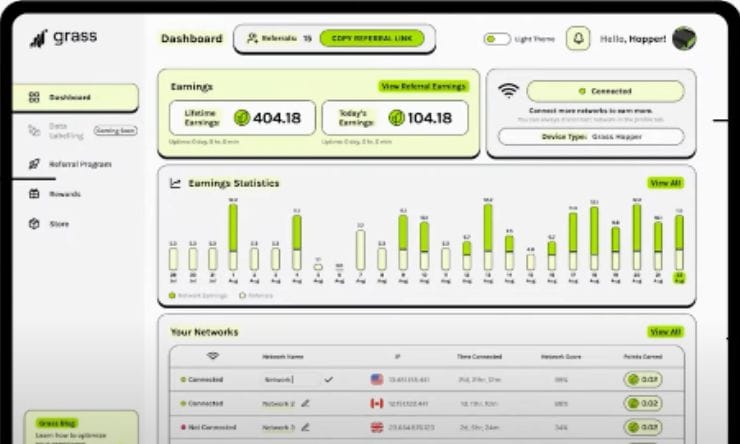The world of cryptocurrency is exhilarating, filled with opportunities and risks alike. As you navigate this digital frontier, it’s essential to understand the tax implications that come with your investments. If you’ve been trading or holding crypto in Australia, you’re probably wondering about one crucial question: how much is capital gains tax on crypto in Australia?
With the rapid rise of cryptocurrencies like Bitcoin and Ethereum, many investors are keen to reap their rewards while keeping a close eye on potential tax liabilities. Understanding capital gains tax (CGT) is vital for protecting your profits and ensuring compliance with Australian regulations. Let’s dive into what CGT means for your digital assets and how it affects you as an investor.
Table of Contents
ToggleUnderstanding Capital Gains Tax (CGT)
Capital Gains Tax (CGT) is a tax on the profit made from selling an asset. In Australia, it’s particularly relevant for investments like shares and property. When you sell your cryptocurrency for more than what you paid, that profit falls under CGT.
The Australian Taxation Office (ATO) requires individuals to report their capital gains when they file their annual tax returns. This means keeping meticulous records of all transactions involving crypto assets dates, amounts, and prices are essential information.
There are different methods to calculate these gains. The most common is subtracting the cost base of the original purchase price from the sale price of the asset. If you’ve held onto your crypto for longer than 12 months, you may be eligible for a discount on your taxable gain as well.
Understanding how CGT works can help you make informed decisions about your investment strategy and potential future sales.
Crypto and CGT: What You Need to Know

Cryptocurrency has fundamentally changed the investment landscape, but it also brings tax implications. In Australia, cryptocurrencies are treated as assets for tax purposes. This means that any profit you make from selling or exchanging your crypto can be subject to Capital Gains Tax (CGT).
When you sell a digital asset, the profit known as a capital gain is calculated by subtracting what you paid for the asset from what you sold it for. If you’ve held onto your crypto for more than 12 months, you’re eligible for a 50% discount on CGT.
It’s crucial to keep accurate records of all transactions involving cryptocurrency. Not only will this help in calculating gains and losses accurately, but it’s also necessary when reporting income to the Australian Taxation Office (ATO). Understanding these nuances can save investors significant amounts during tax time.
Factors that Affect the Amount of CGT on Crypto
Several factors influence the amount of Capital Gains Tax (CGT) you might owe on your crypto investments.
First, the holding period plays a significant role. If you’ve held your assets for over 12 months, you may be eligible for a CGT discount in Australia. This can reduce your taxable gains by 50% if you’re an individual.
Next is how often you trade or sell cryptocurrencies. Frequent trading could lead to larger capital gains compared to long-term holding strategies.
The type of cryptocurrency also matters. Different tokens may have varying levels of market volatility and potential returns, impacting overall gain calculations.
Personal income tax rates are crucial since CGT is added to your assessable income when calculating tax liability. Your total earnings will determine which tax bracket applies and ultimately affect how much you’ll pay on those gains from crypto sales.
how much is capital gains tax on crypto in Australia
In Australia, capital gains tax (CGT) applies to profits made from selling cryptocurrencies. The rate you face depends on your income and how long you hold the asset.
If you’ve owned your crypto for more than one year, a 50% discount can apply to CGT. This means only half of the profit is considered taxable income, potentially lowering your overall tax burden significantly.
For assets held less than a year, you’re taxed at your marginal tax rate. This could range from 19% to 45%, depending on your total earnings for that financial year.
Maintaining thorough records of every transaction is essential. Accurate documentation helps ensure compliance with Australian Taxation Office (ATO) regulations and minimizes any surprises during tax time.
Comparing CGT Rates in Different Countries
When it comes to capital gains tax (CGT) on cryptocurrencies, countries differ significantly in their approach. For instance, the United States applies a tiered CGT system based on how long an asset is held. Short-term gains are taxed at ordinary income rates, while long-term holdings benefit from lower rates.
In contrast, countries like Germany offer tax exemptions for crypto assets held for over a year. This means that if you hold your digital assets long enough, you might not owe any taxes at all.
Australia’s CGT sits somewhere in between these two extremes. Investors here face taxation on profits realized from crypto transactions but can take advantage of certain offsets and discounts.
Understanding these differences is essential for investors looking to manage their tax liabilities effectively across borders. Each country has its unique set of rules that can heavily influence investment strategies and outcomes.
The Current State of Crypto Taxes in Australia
Australia’s approach to cryptocurrency taxation is evolving rapidly. The Australian Taxation Office (ATO) treats crypto as property, meaning that transactions are subject to capital gains tax.
As more Australians invest in digital currencies, the ATO has increased its focus on compliance. Many taxpayers may not realize they need to report their crypto activities correctly. This lack of awareness can lead to costly mistakes and penalties.
Recent guidance from the ATO clarifies how various scenarios like trading, selling, or using cryptocurrency for purchases are taxed. These guidelines emphasize record-keeping and reporting requirements.
Moreover, there’s ongoing discussion about potential reforms in the taxation framework for cryptocurrencies. As technology advances and adoption grows, investors must stay informed about changing regulations affecting their financial landscape.
Strategies to Minimize the Impact of CGT on Your Crypto Investments
To reduce the impact of capital gains tax on your crypto investments, consider holding assets for over 12 months. This allows you to qualify for a 50% discount on any profits when selling.
Another effective strategy is to offset gains with losses. If you’ve made poor investment decisions, realizing those losses can help balance out your overall tax liability.
Keep track of all transactions meticulously. Using reliable software can ease this process and ensure accuracy during tax season.
Consider utilizing tax-advantaged accounts if available in your jurisdiction. Such structures often provide greater flexibility regarding taxation.
It’s wise to consult a professional accountant or financial advisor specializing in cryptocurrency taxes. They can offer tailored advice suited to your specific situation, helping you navigate complex regulations more effectively.
Conclusion
Navigating the complexities of capital gains tax on cryptocurrency in Australia can feel overwhelming. Understanding how CGT works and its implications for your crypto investments is vital for making informed decisions.
The amount you owe in capital gains tax depends on various factors, including how long you’ve held the asset and whether or not you’re considered a trader by the Australian Taxation Office (ATO). Staying updated with current regulations is crucial, as policies surrounding digital currencies are still evolving.
Strategies such as holding assets longer to benefit from discounts, offsetting losses against gains, and seeking professional advice can significantly reduce your tax burden. Being proactive about record-keeping will also help you track your transactions accurately.
As cryptocurrencies continue to gain popularity, understanding their taxation becomes essential for anyone investing in this space. The key takeaway remains: stay informed and explore ways to minimize potential liabilities while maximizing returns on your investments.




